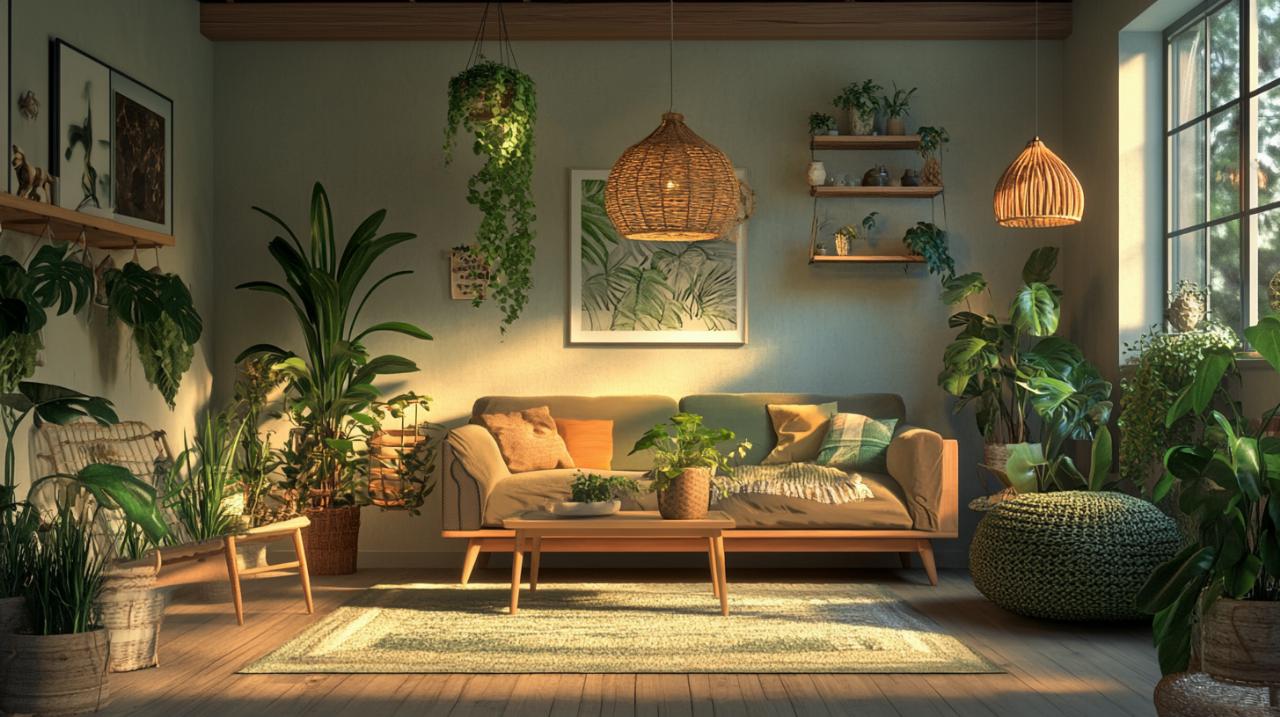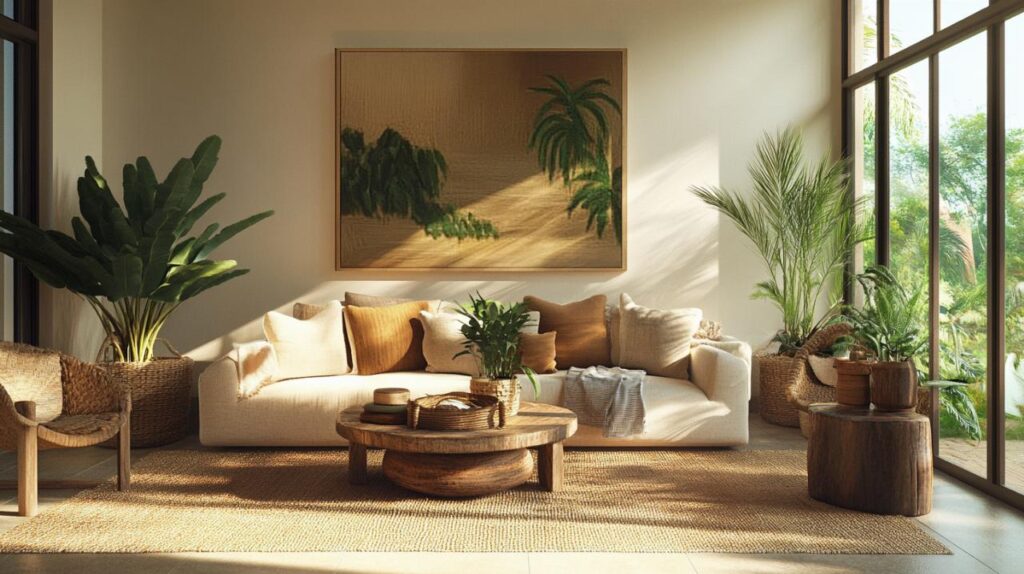Transforming your living space into a sanctuary that reflects the beauty of the natural world has never been more appealing. As more people seek to create environments that foster relaxation and well-being, the shift towards organic aesthetics continues to gain momentum. Whether you live in a bustling city flat or a countryside cottage, embracing elements inspired by nature can breathe fresh life into every corner of your home. By thoughtfully selecting materials, textures, and colours that echo the outdoors, you can craft a space that feels both timeless and thoroughly modern.
Bringing the Outdoors In: Natural Materials for Your Home
The Beauty of Wood and Stone in Interior Design
Wood and stone have long been cherished for their ability to infuse interiors with warmth and character. These materials offer an authenticity that is difficult to replicate with synthetic alternatives. Wooden furniture, whether crafted from reclaimed timber or sustainably sourced hardwood, adds a tactile richness that invites touch and admiration. The grain and colour variations inherent in wood ensure that no two pieces are identical, making each item a unique statement in your decor. Stone, on the other hand, brings a sense of permanence and grounding. Incorporating stone elements such as clay pots or slate accents can introduce a subtle yet striking contrast to softer furnishings. The cool, solid presence of stone balances the visual warmth of wood, creating a harmonious interplay that feels both organic and refined. When you integrate natural home decor ideas into your design approach, consider how the weight and texture of these materials can anchor a room, providing a foundation upon which other elements can rest. Driftwood, with its weathered patina and sculptural form, can serve as an unexpected focal point, while bamboo pieces offer a lighter, more delicate touch. The versatility of these materials means they can adapt to a range of styles, from rustic farmhouse to sleek contemporary, always retaining a connection to the natural world.
Incorporating living plants into every room
Plants are perhaps the most direct way to invite nature into your home, offering not only visual appeal but also tangible benefits for air quality and mental well-being. From small succulents perched on windowsills to dramatic indoor gardens that transform entire walls, botanicals can enliven any space. The presence of greenery has been shown to reduce stress and increase productivity, making it a practical as well as aesthetic choice. Creating a visual connection with nature through plants and flowers is a cornerstone of biophilic design, a philosophy that emphasises the human need to connect with the natural environment. Consider designing a living wall or vertical garden if you have limited floor space but ample vertical surfaces. This approach not only maximises your use of space but also creates a stunning, ever-changing feature that draws the eye and sparks conversation. For those new to indoor gardening, starting with hardy varieties such as ferns, pothos, or peace lilies can build confidence before moving on to more demanding species. Hanging plants introduce a dynamic element, softening hard lines and adding movement as they sway gently in the breeze from an open window. Floral arrangements, whether fresh or dried, bring seasonal colour and fragrance, while small pots and succulents offer low-maintenance charm. By layering different types of greenery throughout your home, you create a sense of abundance and vitality that is both welcoming and restorative.
Creating a Calming Atmosphere with Textures and Earthy Tones
Layering natural textures for visual interest
Texture plays a crucial role in making a space feel inviting and lived-in. Natural materials such as rattan, jute, linen, and woven baskets each bring their own tactile quality, and layering these textures can add depth and interest to your decor. A jute rug underfoot provides a sturdy, rustic foundation, while linen curtains or throws introduce softness and fluidity. Wicker baskets, whether used for storage or as decorative accents, contribute a handcrafted feel that speaks to artisan traditions and ethical sourcing. The beauty of these materials lies in their imperfections; the slight irregularities in weave or finish are a testament to their handmade origins and add character that mass-produced items cannot match. Mixing modern furniture with natural elements creates a balanced aesthetic that feels current yet timeless. For instance, a sleek glass coffee table can be softened with a driftwood centrepiece or a collection of clay pots filled with greenery. Cushions and throws in organic fabrics not only enhance comfort but also offer an opportunity to introduce subtle pattern and colour. When selecting these items, consider the way light interacts with different textures; the play of shadows across a woven basket or the gentle sheen of linen can transform the mood of a room throughout the day. Taking care of wooden and woven items ensures they retain their beauty over time, so regular dusting and occasional conditioning will keep them looking their best.

Choosing the right earthy colour palette
Earthy colours form the backbone of a natural decor scheme, evoking the hues found in forests, deserts, and coastlines. Shades of terracotta, ochre, sage, and taupe create a warm, cohesive palette that feels grounded and serene. These colours work harmoniously with natural materials, enhancing their inherent beauty without overwhelming the senses. When planning your colour scheme, think about the emotional response you wish to evoke; softer tones promote relaxation and calm, while richer, deeper shades can add drama and sophistication. One effective approach is to use a neutral base and layer in accents of colour through textiles, artwork, and accessories. This allows for flexibility and makes it easier to refresh your space as seasons change or tastes evolve. Natural light plays a significant role in how colours are perceived, so it is worth observing how your chosen palette shifts from morning to evening. Maximising natural light entering a room not only highlights the textures and tones of your decor but also contributes to a sense of openness and well-being. If your space lacks abundant daylight, consider using mirrors to reflect what light is available, or choose lighter shades to brighten the room. Organic shapes and patterns inspired by nature, such as leaf motifs or flowing lines, can be subtly incorporated into wallpaper, cushions, or artwork, reinforcing the connection to the outdoors without resorting to overtly themed designs. The goal is to create an environment that feels cohesive and intentional, where every element contributes to a sense of harmony and ease.
Sustainable and eco-friendly decor choices
Sourcing environmentally conscious materials
As awareness of environmental issues grows, many people are seeking ways to make their homes more sustainable. Decorating with natural materials is inherently eco-friendly, as these materials are often renewable, biodegradable, and require less energy to produce than synthetic alternatives. However, it is important to ensure that the items you choose are ethically sourced and produced. Working directly with artisans who use traditional techniques not only supports local economies but also preserves cultural heritage and craftsmanship. Handmade items have a special charm and integrity that reflects the skill and care of their makers. When selecting furniture and accessories, look for certifications or information about the origins of the materials. Reclaimed wood, for example, offers the same aesthetic appeal as new timber but with a significantly lower environmental impact. Bamboo, which grows rapidly and requires minimal resources, is another excellent choice for everything from flooring to blinds. By prioritising quality over quantity, you invest in pieces that will last for years, reducing the need for frequent replacements and minimising waste. The use of natural aromas, whether through plants, essential oils, or scented bioethanol fireplaces, can enhance the sensory experience of your home while avoiding synthetic fragrances that may contain harmful chemicals. Incorporating water features, such as small tabletop fountains, introduces the soothing sound of flowing water and can improve humidity levels, benefiting both your plants and your respiratory health.
Simple Swaps for a Greener Living Space
Even if a complete redesign is not feasible, small changes can make a significant difference to the sustainability and aesthetic of your home. Swapping plastic storage containers for woven baskets or clay pots is an easy first step that adds visual interest while reducing reliance on synthetic materials. Replacing synthetic cushions and throws with those made from organic cotton, linen, or wool not only feels better but also supports more sustainable production methods. Choosing furniture with a longer lifespan, such as solid wood pieces rather than particleboard, means fewer items end up in landfill. Improving the transition between indoors and outdoors can blur the boundaries and create a greater sense of space. This might involve positioning furniture to take advantage of views, using glass doors to bring in more light, or adding potted plants near entryways to create a welcoming threshold. A bioethanol fireplace can serve as a focal point that provides warmth and ambience without the emissions or mess associated with traditional wood burners, making it both a practical and stylish addition to a living space. Supporting companies that value ethical sourcing and offer flexible payment options, free delivery, or discount offers during events such as Black Friday sales can make sustainable choices more accessible. By being mindful of the origins and lifecycle of the items you bring into your home, you contribute to a broader movement towards sustainable living. The cumulative effect of these choices extends beyond your own four walls, encouraging a shift in market demand towards products that respect both people and planet. In this way, transforming your living space with natural elements becomes not just a design choice but a statement of values and a commitment to a more thoughtful, connected way of living.







